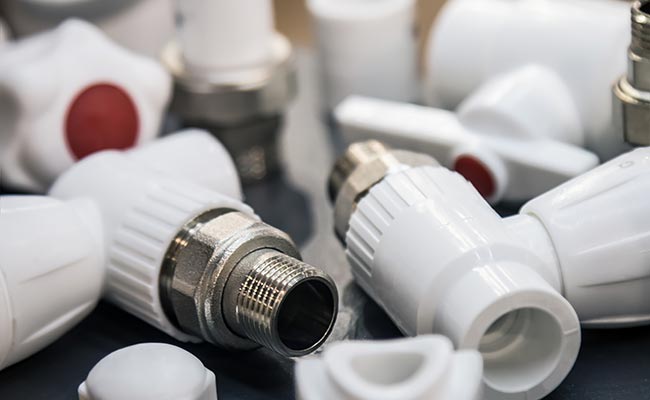You’ve made your cut, but a leaky seal means wasted time, money, and materials. A single bad joint on a PVC line can force you to cut out an entire section and start over.
To install a ball valve on a PVC pipe, you use solvent welding. This involves cutting the pipe cleanly, deburring, applying PVC primer and cement to both surfaces, then pushing them together with a quarter twist and holding firmly until the chemical bond sets.
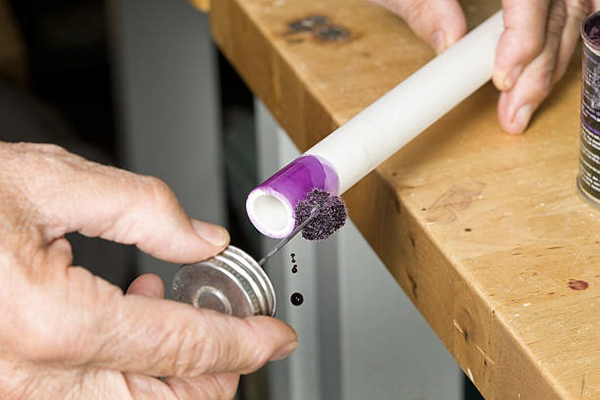
This isn’t just gluing; it’s a chemical process that fuses plastic into a single, strong piece. Getting it right is non-negotiable for the pros. It’s a point I always stress with partners like Budi in Indonesia. His customers, whether they are large contractors or local retailers, depend on reliability. A failed joint isn’t just a leak; it’s a project delay and a blow to their reputation. Let’s cover the essential questions to make every installation a success.
How do you connect a valve to a PVC pipe?
You have a valve in hand, but you’re looking at a smooth pipe. You know there are different connection types, but which one is right for your job to guarantee a strong, leak-free system?
You connect a valve to PVC pipe in one of two ways: a permanent solvent-weld (socket) connection, which is best for PVC-to-PVC, or a serviceable threaded connection, ideal for joining PVC to metal components like pumps.
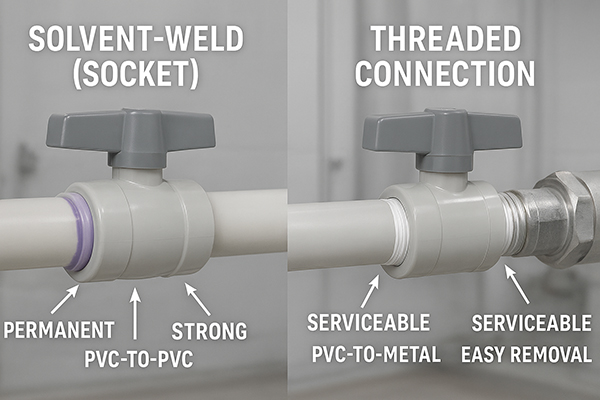
Choosing the right method is the first step to a professional installation. For systems that are entirely PVC, solvent welding is the industry standard. It creates a seamless, fused joint that is as strong as the pipe itself. The process is quick, reliable, and permanent. Threaded connections are used when you need to connect your PVC line to something with existing metal threads, or when you anticipate needing to remove the valve easily later. However, threaded plastic fittings must be installed carefully to avoid cracks from over-tightening. For most standard PVC pipelines, I always recommend the strength and simplicity of a solvent-weld connection. When serviceability is key, a true union ball valve gives you the best of both worlds.
What is the right way to install a ball valve?
The valve is glued in perfectly, but now the handle hits a wall and can’t close. Or you installed a true union valve so tight against an elbow that you can’t get a wrench on it.
The “right way” to install a ball valve is to plan for its operation. This means dry-fitting first to ensure the handle has a full 90-degree turning radius and that union nuts are completely accessible for future maintenance.
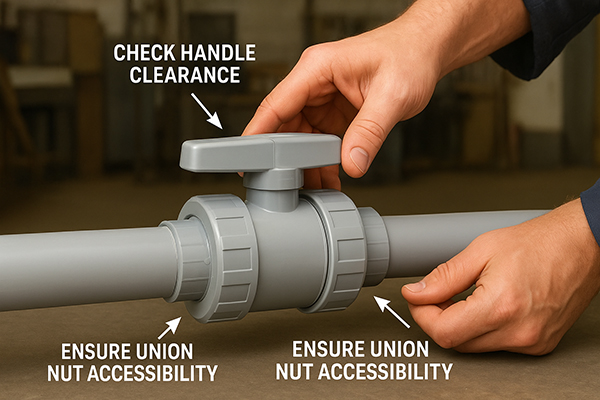
A successful installation goes beyond just a leak-proof seal; it’s about long-term functionality. This is where a minute of planning saves an hour of rework. Before you even open the primer, place the valve in its intended spot and swing the handle. Does it move freely from fully open to fully closed? If not, you need to adjust its orientation. Secondly, if you are using a high-quality true union valve like ours at Pntek, you must ensure you can access the union nuts. The purpose of these valves is to allow removal of the valve body without cutting the pipe. I constantly remind Budi to tell his clients this: if you can’t get a wrench on the nuts, you’ve defeated the entire purpose of the valve. Think of it as installing not just for today, but for the person who has to service it five years from now.
Are PVC ball valves directional?
You’re ready with the cement, but you pause, frantically looking for a flow arrow on the valve body. You know gluing a directional valve in backward would be a catastrophic, costly mistake.
No, a standard PVC ball valve is not directional; it is bi-directional. It uses a symmetrical design with seals on both sides, allowing it to shut off flow equally well from either direction. The only “direction” to worry about is its physical orientation for handle access.
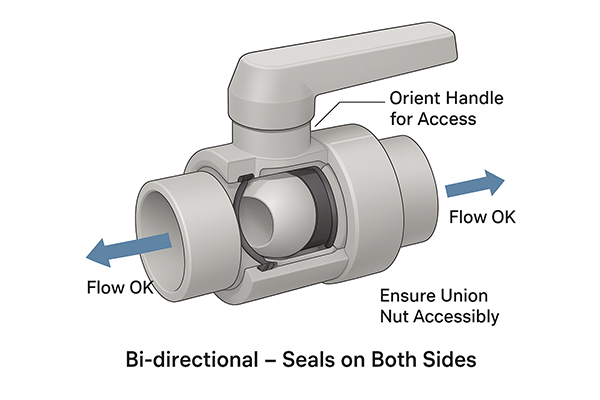
This is an excellent and common question. Your caution is justified because other valves, like check valves or globe valves, are absolutely directional and will fail if installed backward. They have a distinct arrow on the body to guide you. A ball valve, however, works differently. Its core is a simple ball with a hole through it, which rotates to seal against a seat. Since there’s a seat on both the upstream and downstream side of the ball, it creates a tight seal regardless of which way the pressure is coming from. So, you can relax. You cannot install a standard ball valve “backward” in terms of flow. This simple, robust design is one reason they are so popular. Just focus on positioning it so the handle and unions are easy to get to.
How reliable are PVC ball valves?
You’ve seen a cheap, no-name PVC valve crack or leak after only a year, making you question the material itself. You wonder if you should just use a more expensive metal valve.
High-quality PVC ball valves are extremely reliable and can last for decades. Their lifespan is determined by the quality of the raw material (virgin vs. recycled PVC), manufacturing precision, and proper installation. A quality valve often outlasts the system it’s in.
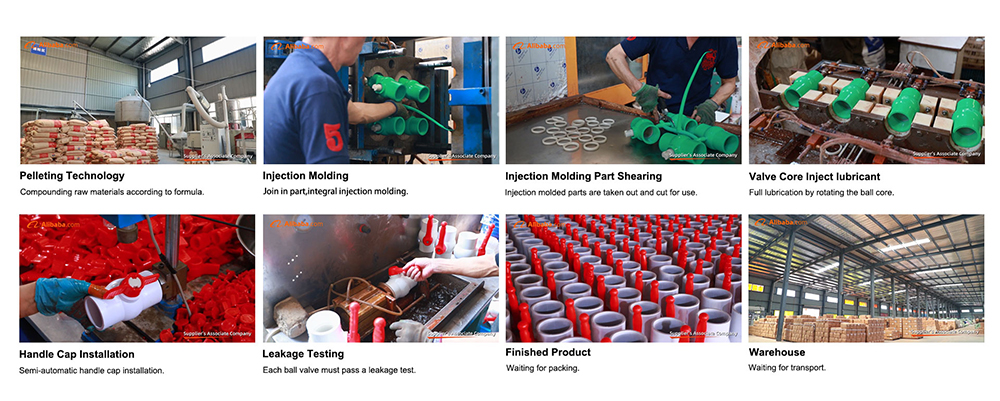
The reliability of a PVC ball valve comes down to what it’s made of and how it’s made. This is the core of our philosophy at Pntek.
What Determines Reliability?
- Material Quality: We insist on using 100% virgin PVC. Many cheap valves use recycled or filler materials, which makes the plastic brittle and prone to failure under pressure or UV exposure. Virgin PVC provides superior strength and chemical resistance.
- Manufacturing Precision: Our automated production ensures every valve is identical. The ball must be perfectly spherical and the seats perfectly smooth to create a bubble-tight seal. We pressure-test our valves to a standard far higher than they will ever see in the field.
- Design for Longevity: Features like a true union body, EPDM or FKM O-rings, and a robust stem design all contribute to a longer service life. This is the difference between a throwaway part and a long-term asset.
A well-made, properly installed PVC valve is not a weak link; it’s a durable, corrosion-proof, and cost-effective solution fo
Post time: Aug-13-2025



